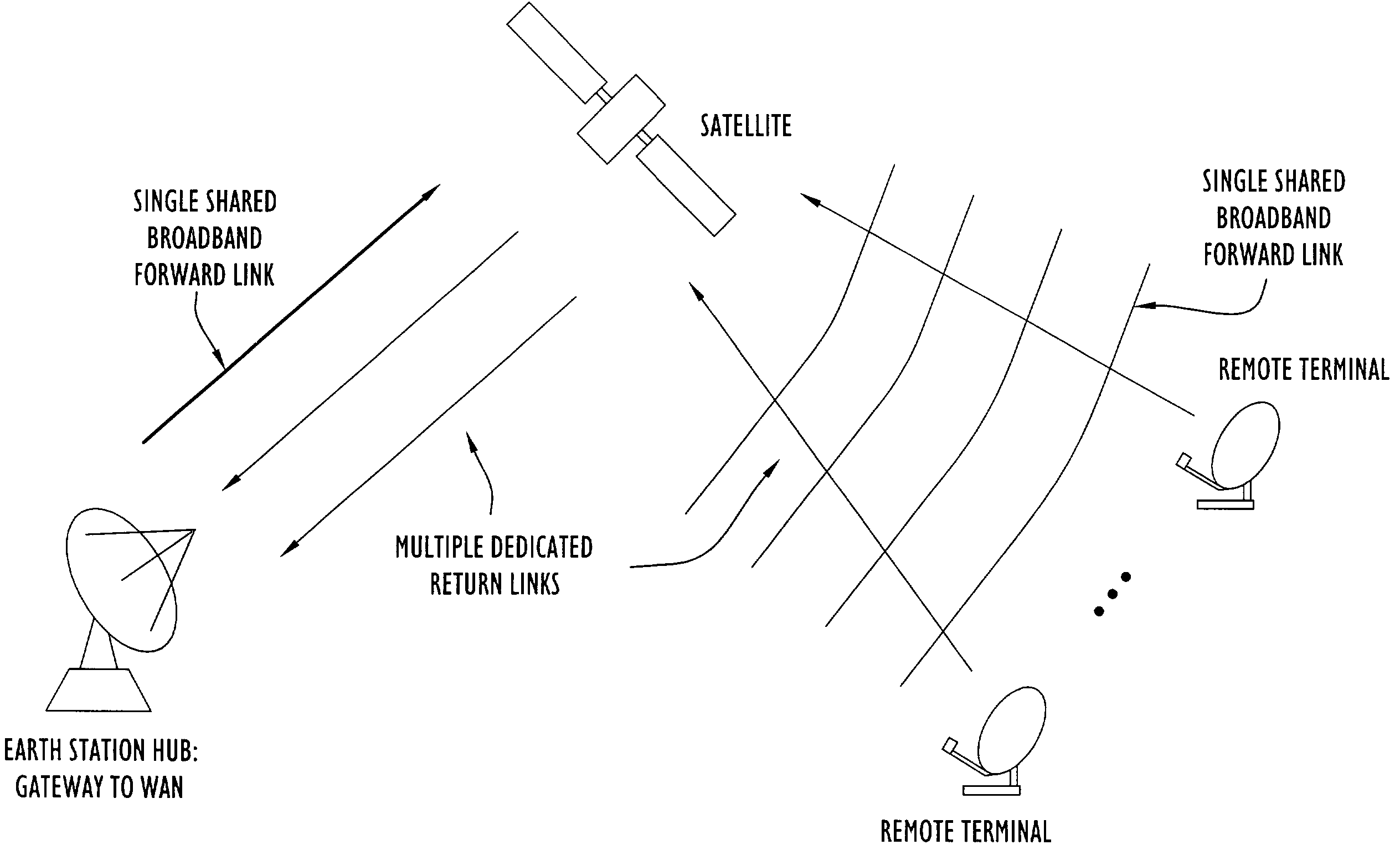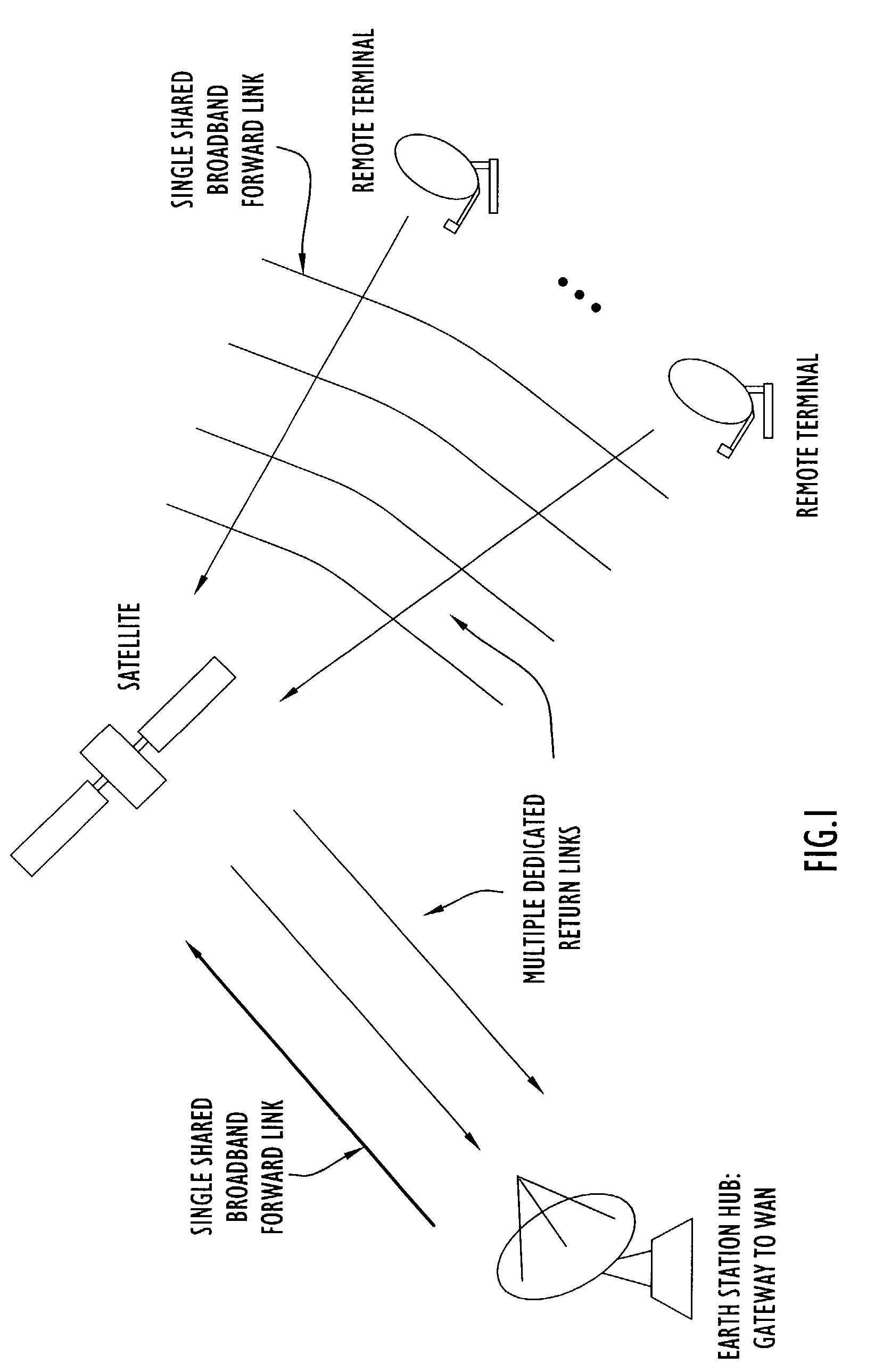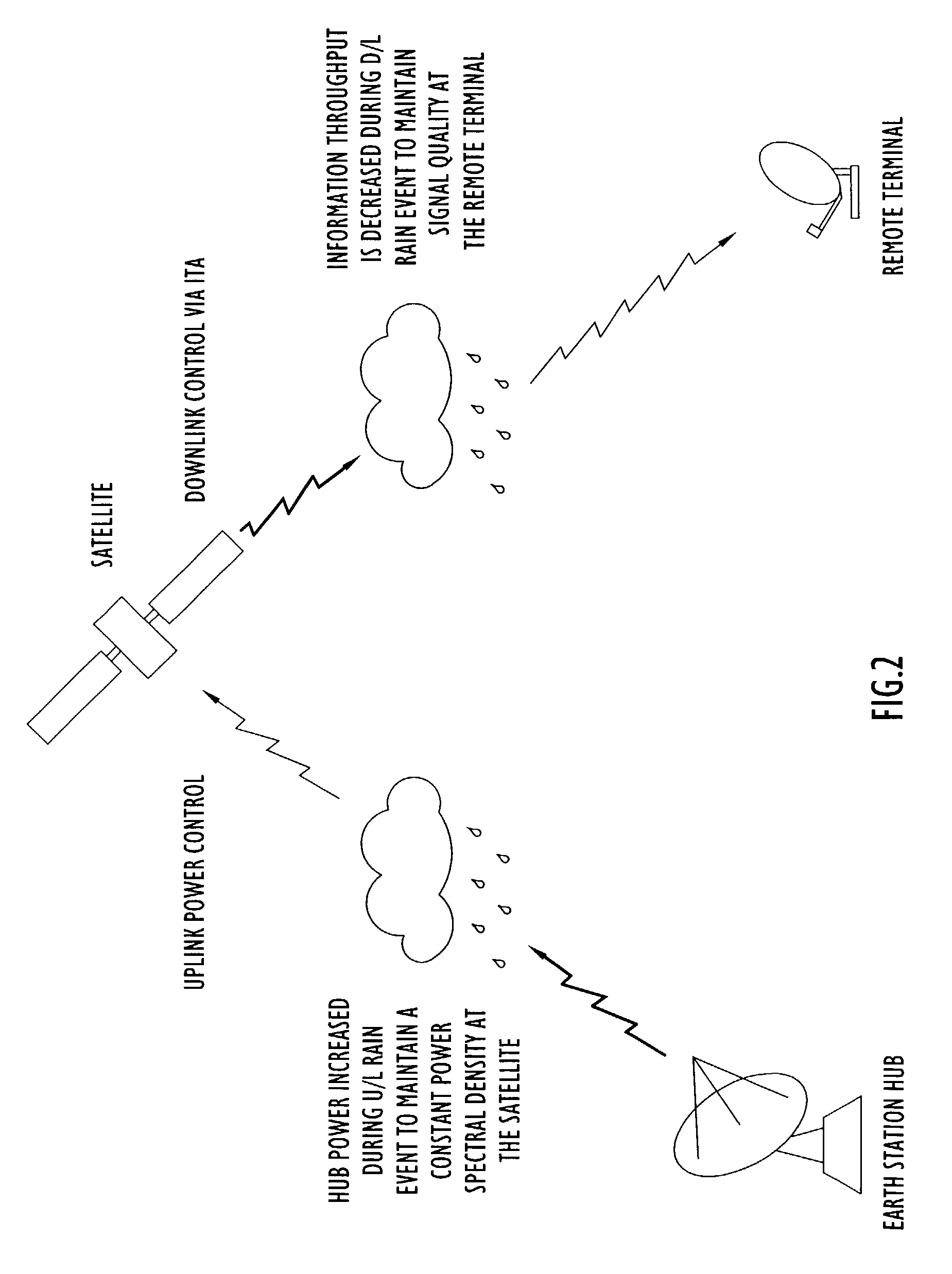Methods and apparatus for mitigating rain fading over SATCOM links via information throughput adaptation
a technology of information throughput and adaptation, which is applied in the field of methods and apparatus for mitigating rain fading over satellite communications (satcom) links, can solve the problems of inability to easily extend the adaptive link power control algorithms developed for x-band satcom to operate at the higher frequencies, carries a signal attenuation penalty, and cannot be easily maintained. , to achieve the effect of increasing data throughput rate, maximizing information throughput, and improving bandwidth efficiency
- Summary
- Abstract
- Description
- Claims
- Application Information
AI Technical Summary
Benefits of technology
Problems solved by technology
Method used
Image
Examples
Embodiment Construction
[0042]The following detailed explanations of FIGS. 1–9 and of the preferred embodiments reveal the methods and apparatus of the present invention. The present invention takes advantage of evolutions in satellite and terrestrial communications technologies to support terrestrial communications with satellite communications in a unique way. The invented system includes an ensemble of components that provide both a complete solution for the QoS-based establishment and transmission of broadband communications over SATCOM. The system includes bandwidth efficient modulation that can dynamically adapt to changes in the RF propagation environment and baseband interface processing and switching to support seamless interface with terrestrial infrastructure based on any one or combination of protocols including, but not limited to: IP, ATM, Frame Relay, and Streaming Data protocols.
[0043]The communications system of the present invention has standardized interfaces to allow mixing and matching...
PUM
 Login to View More
Login to View More Abstract
Description
Claims
Application Information
 Login to View More
Login to View More - R&D
- Intellectual Property
- Life Sciences
- Materials
- Tech Scout
- Unparalleled Data Quality
- Higher Quality Content
- 60% Fewer Hallucinations
Browse by: Latest US Patents, China's latest patents, Technical Efficacy Thesaurus, Application Domain, Technology Topic, Popular Technical Reports.
© 2025 PatSnap. All rights reserved.Legal|Privacy policy|Modern Slavery Act Transparency Statement|Sitemap|About US| Contact US: help@patsnap.com



